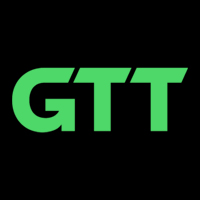
Email Eddie
How can we help?
Whether you're looking for expert ITSM consulting, cutting-edge technology solutions, award-winning training courses, or hands-on IT support, explore our website and use the search box to easily find the resources, insights, and services you need.
Directory Services Management
A Directory Service is a specialised Software Application that manages information about the resources available on a network and which users have access to. It is the basis for providing access to those resources and for ensuring that unauthorized access is detected and prevented.
Directory services view each resource as an object of the Directory Server and assign it a name. Each name is linked to the resources network address so that users don’t have to memorize confusing and complex addresses. Directory Services is based on the OSI’s X.500 standards and commonly uses protocols such as Directory Access Protocol (DAP) or Lightweight Directory Access Protocol (LDAP). LDAP is used to support user credentials for application login and often includes internal and external user/customer data which is especially good for extranet call logging. Since LDAP is a critical operational tool and generally kept up to date, it is also a good source of data and verification for the CMS.
Directory Services Management refers to the process that is used to manage Directory Services. Its activities include:
- Working as part of Service Design and Service Transition to ensure that new services are accessible and controlled when they are deployed.
- Locating resources on a network (If these have not already been defined during Service Design)
- Tracking the status of those resources and providing the ability to manage those resources remotely
- Managing the rights of specific users or groups of users to access resources on a network
- Defining and maintaining naming conventions to be used for resources on a network
- Ensuring consistency of naming and access control on different networks in the organisation
- Linking different Directory Services throughout the organisation to form a distributed Directory Service, i.e. users will only see one logical set of network resources. This is called Distribution of Directory Services
- Monitoring Events on the Directory Services, such as unsuccessful attempts to access a resource, and taking the appropriate action where required
- Maintaining and updating the tools used to manage Directory Services.
Case studies

Growth powered by Pink Elephant’s SIAM IT Service Desk
Corplex (formerly DS Smith Plastics, Extruded Products) is a leading manufacturer of innovative reusable packaging. With a history spanning 50 years, Corplex rebranded in 2020 after being acquired by Olympus Partners. The company is dedicated to sustainability and excellence, establishing itself as a trusted name in the Reusable Transport Packaging...

Bespoke Customer Service training programme for GTT
Pink Elephant EMEA builds on the success of a GTT’s customer service offering with a bespoke virtual training programme. Find out more below about the objectives, challenges, and successes of delivering a training programme to 250+ GTT employees, in three countries, across three time zones. Find Out More about Customer...

AON optimises ITSM and UX
Aon PLC, a leading British-American multinational professional services firm, offers a wide range of financial risk-mitigation products, including insurance, pension administration, and health insurance plans. To continue delivering exceptional service across its global operations, Aon sought to transform its IT Service Management (ITSM) practices and enhance the user experience. The...